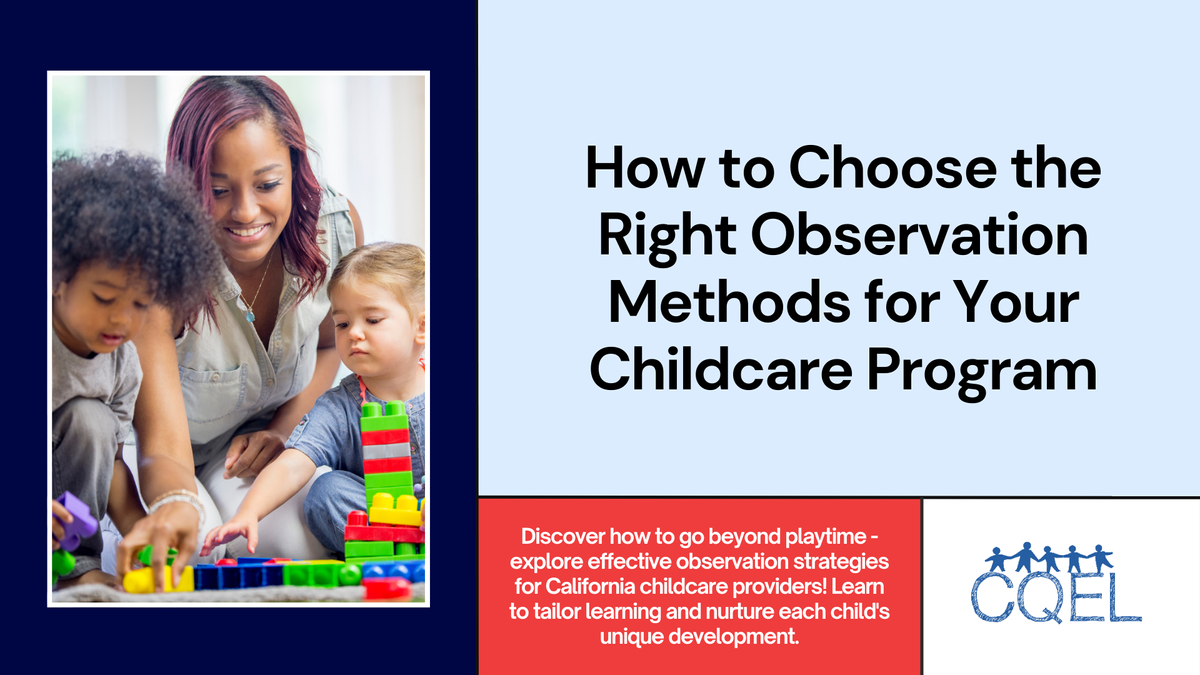How to Choose the Right Observation Methods for Your Childcare Program
Discover how to go beyond playtime - explore effective observation strategies for California childcare providers! Learn to tailor learning and nurture each child's unique development.

In the dynamic world of early childhood education (ECE), observation is more than just watching children play. It's a powerful tool for understanding a child's strengths, interests, and developmental progress. As an aspiring childcare provider in California, choosing the most effective observation methods for your program is crucial for tailoring learning experiences and fostering each child's unique potential. Let's explore some key strategies to help you navigate the world of observation and select the methods that best suit your program's needs.
Considering Your Program and Age Group
The most effective observation methods depend on the specific structure and age group of your childcare program. For infant and toddler classrooms, where verbal communication is still developing, anecdotal records become invaluable. These brief, focused notes capture a specific moment in a child's day, detailing their interactions, reactions, or emerging skills. Preschool classrooms, on the other hand, might benefit from running records. These ongoing narratives document a child's experiences throughout the day, providing a more comprehensive picture of their social interactions, problem-solving approaches, and learning styles.
Aligning with California's Standards
California's Early Learning and Development Standards (ELDS) serve as a guiding framework for early childhood programs in the state. When choosing observation methods, ensure they allow you to track a child's progress across the various domains outlined in the ELDS, such as language and communication, social-emotional development, and cognitive skills. Checklists or rating scales specifically designed to align with the ELDS can be valuable tools for documenting a child's progress in specific areas.
Variety is Key: A Multi-Method Approach
No single observation method is a silver bullet. Embrace a multi-method approach that utilizes various techniques to gain a holistic understanding of each child. Consider incorporating photographs or video recordings (with parental consent) to capture fleeting moments of expression, play, or learning breakthroughs. Sampling, where you focus on a specific behavior or skill for a set period, can be helpful for gaining insights into a child's focus, attention span, or social interactions. Remember, the most effective observation methods are those that are unobtrusive to the child's natural play and learning environment.
Building a Collaborative Culture of Observation
Observation isn't just a solo endeavor. Encourage collaboration among teachers in your program. Schedule regular team meetings to discuss observations, share insights, and identify areas where children might require additional support. Furthermore, consider involving parents in the observation process. Sharing your observations and inviting their input fosters a collaborative approach to understanding and nurturing each child's development. The California Department of Education's website offers a wealth of resources on effective observation practices in early childhood settings.
By carefully considering your program's needs, aligning with the ELDS, and embracing a variety of observation methods, you can create a comprehensive system for understanding each child entrusted to your care. Remember, effective observation is not about judgment; it's about unlocking a deeper understanding of a child's unique world and fostering a stimulating learning environment that caters to their individual needs.
